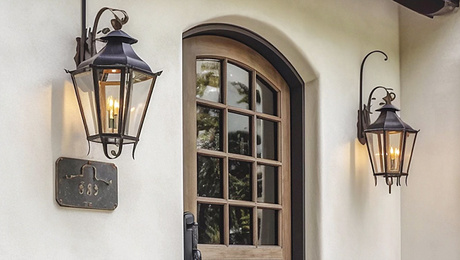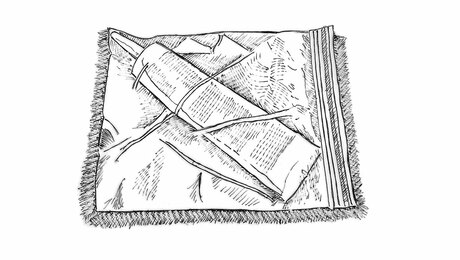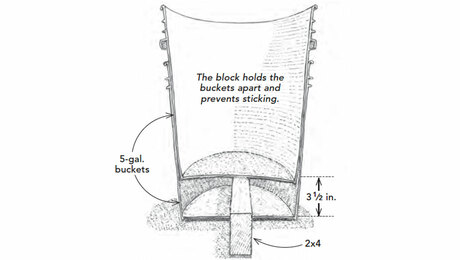Laminate Flooring Is Here to Stay
It's better-looking and more affordable than ever.
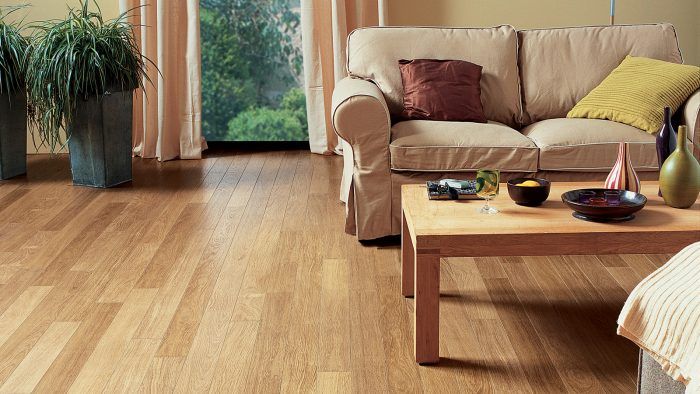
Synopsis: Laminate may not be the hardwood flooring that many homeowners dream of, but it’s an affordable option that is growing in popularity. Today’s laminates are available in a wide variety of styles, looking like everything from wood to tile to limestone. Assistant editor Justin Fink explains the details of laminates: how they’re made, how they are assembled in a house, and how manufacturers are making them look increasingly like the real thing they’re representing. Included are sidebars on laminate moldings and laminate underlayments, which include vapor barriers and sound-reduction layers.
While it may never be your first choice for the main entry of a house, laminate flooring has even the most devout natural-flooring fans appreciating its variety and affordability. According to Texas builder Mark McSwain, “Everyone seems to agree that it’s not as good as the real thing, but at an average price of $1.24 per sq. ft., it is what folks will pay for.”
According to the North American Laminate Flooring Association (www.nalfa.com), laminates have experienced the largest continuous growth in the entire flooring industry. Manufacturers are converting skeptics by improving laminate technology with innovations like glueless mechanical joints, tapered and beveled edges, and realistically textured surfaces.
The ever-widening choice of styles is also a positive factor. Interested in wormy chestnut, hand-scraped pine, limestone, Mexican pavers, or ceramic tile? You can be sure it’s available in laminate.
Photos can’t compete with samples

The Web has created a large online flooring market, but resist the temptation to choose a laminate sight unseen. The feel of a laminate floor is absolutely as important as its appearance. At the very least, ask manufacturers, distributors, and online retailers for samples of each product you are interested in comparing. They are usually happy to provide samples, and you will be surprised by how different each floor looks in person.
Even better, visit a flooring retailer that has sample installations. There is simply no better way to see how realistic the surface appears, to evaluate how each brand holds up to foot traffic, and to hear how different floors sound under a pair of high heels.
Is thicker better?
Laminate flooring typically ranges from 6 mm to 12 mm thick (roughly 1⁄4 in. to 1⁄3 in.). According to Andre Tesolin of Torlys Flooring, a manufacturer of laminate and other types of flooring, if a laminate is thinner than 8 mm, the planks may not be stable enough to resist the cupping effects of high moisture. And although the perception is that thicker is better, Tesolin warns that many of the thicker laminates are of a lower quality and also may be susceptible to excessive swelling in moist environments.
Steve Simonson, chief executive officer of iFloor.com, notes that when thicker high-quality planks or tiles are combined with a good underlayment, they are less likely to sound hollow underfoot — a common complaint with laminates in general.
The only way to know for sure whether thicker is better is by checking the product’s swell rate, which measures how much the laminate core expands when submerged in water for 24 hours. Tesolin notes that better-quality brands make this information available in print because it is a key differentiator. The maximum allowable standard for moisture swell is 18%; many laminates fail this test, or come dangerously close to failing. Once the core gets wet and swells, the entire piece needs to be replaced. Better products have swell ratings of 12% or less, but if you don’t see the number on the box, there’s a good chance that the product has poor resistance to high humidity and moisture absorption.
It’s a floating floor
A laminate floor is not attached to the subfloor in any way. Instead, the planks or tiles are joined to each other and are installed over a smooth, level underlayment with a 3⁄8-in. gap around the floor’s outside edges.
Until a few years ago, every brand of laminate flooring on the market required glue to join planks together. Glue-together planks still are being sold by a few manufacturers, but the vast majority of laminates sold today rely instead on a glueless mechanical joint.
The benefits are clear: Glueless floors assemble without clamps, adhesives, or resulting edge-swell problems. Instead, planks use locking tongue-and-groove connections that are faster and easier to install, yet allow the floor to be disassembled if necessary.
Natural character means a more realistic appearance
Each laminate tile or plank begins its life as part of a larger sheet, much like an oversize piece of veneered plywood. The veneer on laminate, though, is actually a huge photographic image coated with a clear, durable wear layer. The grain pattern and coloration vary across the face of the large uncut laminate sheet, but the overall image doesn’t vary between sheets. The identical sheets then are cut into eight or nine planks so that there is a distinction in the pattern from one plank to the next.
Why should you care? Because this repetition is part of the reason that laminate flooring often is designed with subtle grain and uniform colors. Many buyers believe that having less distinction between planks means less chance of noticing a repeat. The trouble is that these bland patterns often end up looking like poor substitutes for the real thing.
For the look of a true hardwood floor, forget about bland, and choose a style that includes natural-looking imperfections. Knots, checking, or even faux sawblade marks help to break up the repetition and make a laminate floor look more true to life. Some of the Mannington and Quick-Step products do an excellent job with these details.
According to Tesolin, the best laminates have about 10 plank variations, but some of the cheap varieties have as few as four. With such a high rate of repetition, you are more likely to join two planks with the same photo end to end or side by side. To help curb the chances of a repeat, Quick-Step’s Elegance line and Lumber Liquidators’s Nirvana V3 line both offer three different plank lengths within each package. By varying the orientation of the planks and by keeping the lengths random, you have more design options and much less chance of an obvious repetition.
There are also manufacturers—ABET is one example—that make laminates in solid colors or simple patterns. Because these floors aren’t trying to imitate nature, repetitive patterns and imperfect impersonations are not concerns.
Technology creates the illusion of imperfections
Laminate-flooring manufacturers are using new technologies to make their flooring look more realistic. These features will raise the price to $3.50 per sq. ft. or higher, but paying extra can give you a floor that truly fools the eye.
Depending on the brand you choose and the amount of money you are willing to spend, the grain and surface texture you end up with can look more or less convincing. To see the difference between surface textures, hold the plank at an angle under a light source and look along its surface.
One popular method of breaking up the eerily smooth surface of a traditional laminate floor is either to taper or to bevel the edges of each plank slightly. Planks that join tightly to one another are great for keeping water from soaking through a floor, but that doesn’t mean your kitchen floor has to look like a giant sheet of laminate with no delineation between pieces. Tapered or beveled edges offer the same water resistance, and they help to break up the monotony of a large laminate floor.
Another way manufacturers are making fake wood look real is by adding depth to the surface of the plank itself. Several brands now offer laminates that look like old reclaimed hardwood, with gouges and grooves pressed into the planks for the effect of a hand-scraped finish. This technique does a nice job of approximating the real thing.
Durability isn’t predictable, but it is testable
The frustrating thing about side-by-side comparisons of laminate flooring is that much of the quality is a function of invisible details. For instance, it’s impossible to look at a melamine wear layer and judge whether it will show scratches in a few years or whether a small puddle of water is more likely to seep into the crack between the planks of one brand or another.
For this reason, iFloor.com paid a laboratory to conduct blind-testing for side-by-side comparisons of features like wear resistance, moisture resistance, and more. Pergo, Quick-Step, True Groove, Westhollow, and Wilsonart were among the highest-scoring brands. The results for more than 70 varieties of laminate are available free of charge at www.ifloor.com/articles.
Laminate flooring always will be a cost-driven market
Mannington recently released a laminate plank that replaces the usual high-density fiberboard core with hollow chambers of extruded plastic. Called iCore, the product is designed for high-traffic commercial applications and is impervious to water. This plank definitely stands out from the crowd and raises the question of whether this is the next wave of laminate flooring.
According to Betsy Amoroso of Mannington, the iCore line probably does not indicate the future of residential laminate flooring, simply because its high price of about $6.20 per sq. ft. outweighs the number-one benefit of laminate flooring: low cost.
“Laminates are still very much a cost-driven product,” said Amoroso, “and though the technology may improve over time, these products are likely to remain an economical flooring alternative.”
Laminate Layers

- Wear layer: Typically made from a clear layer of melamine that is impregnated with a hard-wearing aluminum oxide, this film is the reason why laminate floors areso durable.
- Photo layer: Not to be confused with the real layer of solid wood found on engineered flooring, the photographic image on laminates can mimic anything from marble tile to exotic hardwood.
- Core: Also known as a carrier board, this high-density fiberboard core is the backbone of each plank.
- Backing: Sometimes called a balancing layer, this portion of the laminate typically is made from melamine and adds extra resistance to subfloor moisture to make the flooring more stable.
No need for glue and clamps
Most modern planks connect with different versions of a dry-fitting mechanical joint to create a tight, water-resistant, nearly invisible joint.
Planks or tiles
Laminates made to look like wood are manufactured in both random and uniform lengths, and either single boards or combinations of two or three boards called strips. If you choose a laminate floor that looks like stone or tile, each piece usually is installed individually just like a real stone or tile floor. Manufacturers sometimes offer combination tiles as well.
In the groove
Square-edged planks join together to create a surface with a smooth finish, but they sometimes end up looking like one continuous sheet of vinyl. If you want more delineation between planks, consider chamfered or beveled joints.
Natural or knot
1) Avoid generic grain patterns imprinted on the wear layer that don’t match the grain of the photo layer below. (2) Better products use “embossed in register” technology to match the wear layer with the grain texture shown in the underlying photo. (3) To avoid a cookie-cutter look, some manufacturers take realism to the next level by showing imperfections like knots and sawblade marks. (4) The premium products go as far as imprinting gouges, grooves, and dents into the surface of the planks to re-create the look of distressed or hand-scraped wood. (5) For those who don’t want to imitate nature, some manufacturers make laminates in solid colors and simple patterns.
Common laminate moldings
Laminate flooring needs room to expand with changes in humidity and temperature, so color-matched trim is necessary to cover the transition gaps and expansion gaps around the perimeter of the floor.
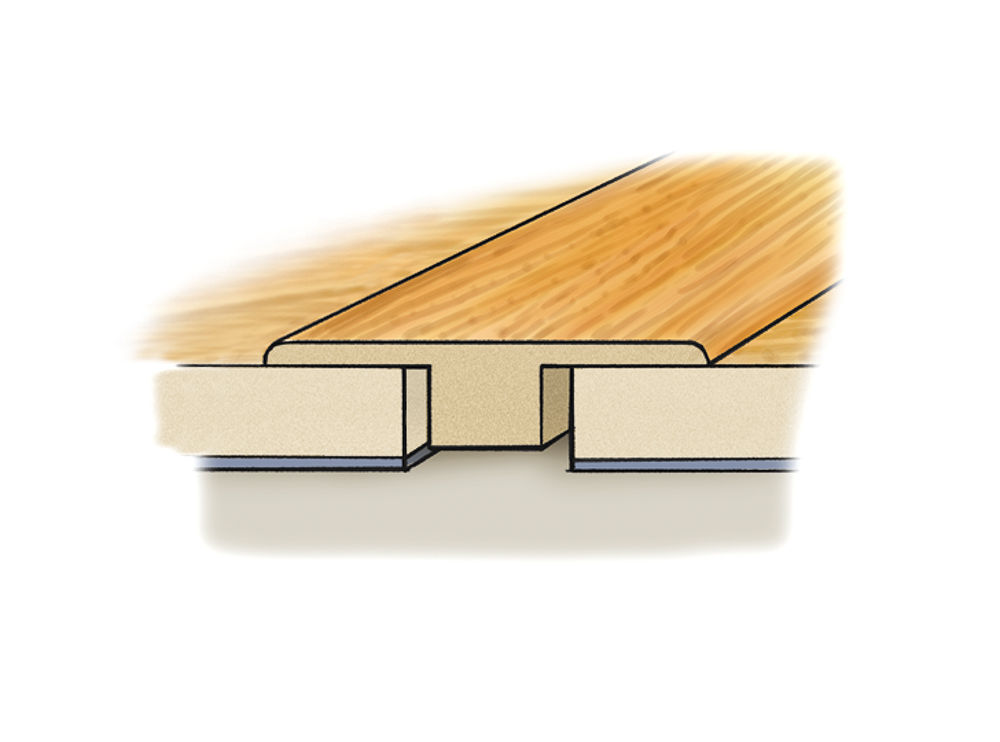
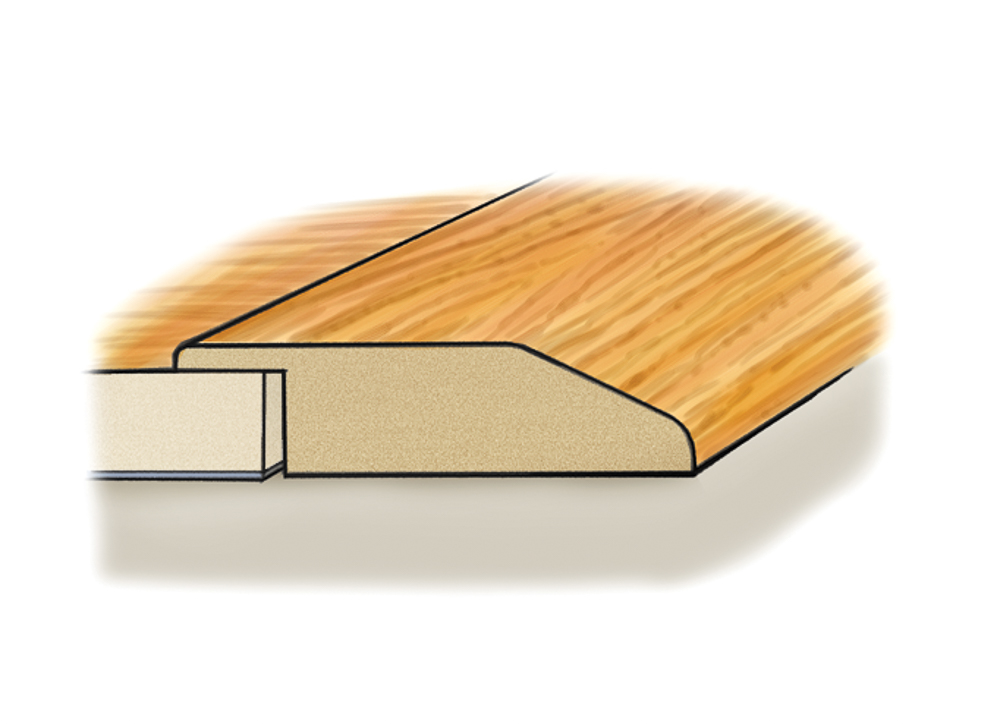
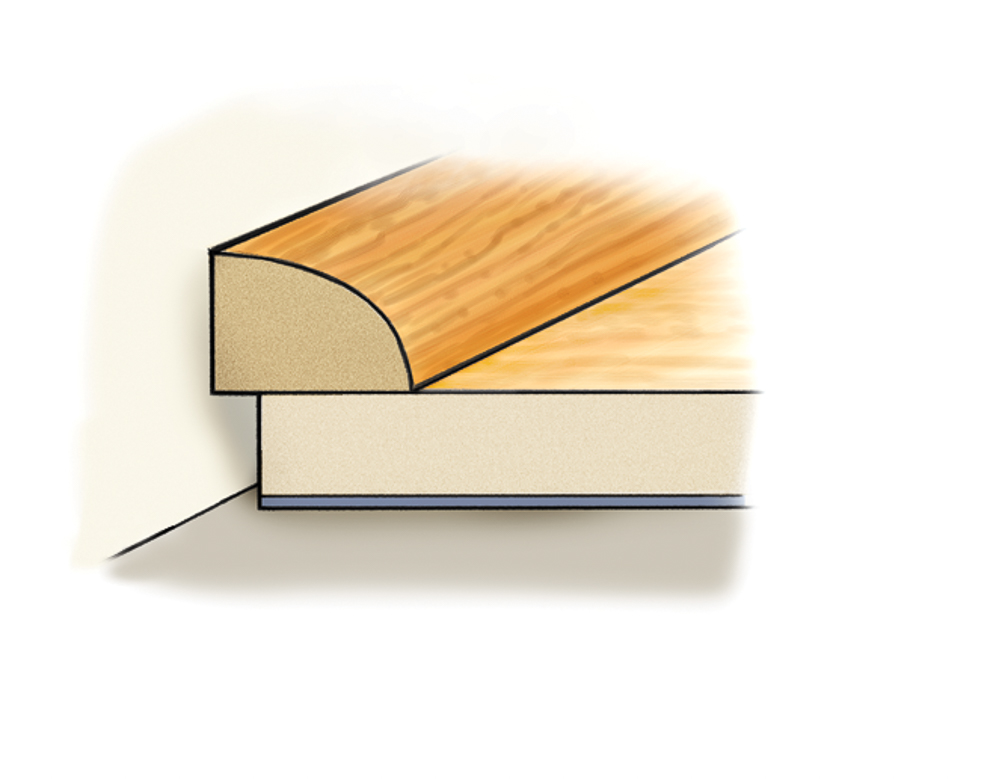
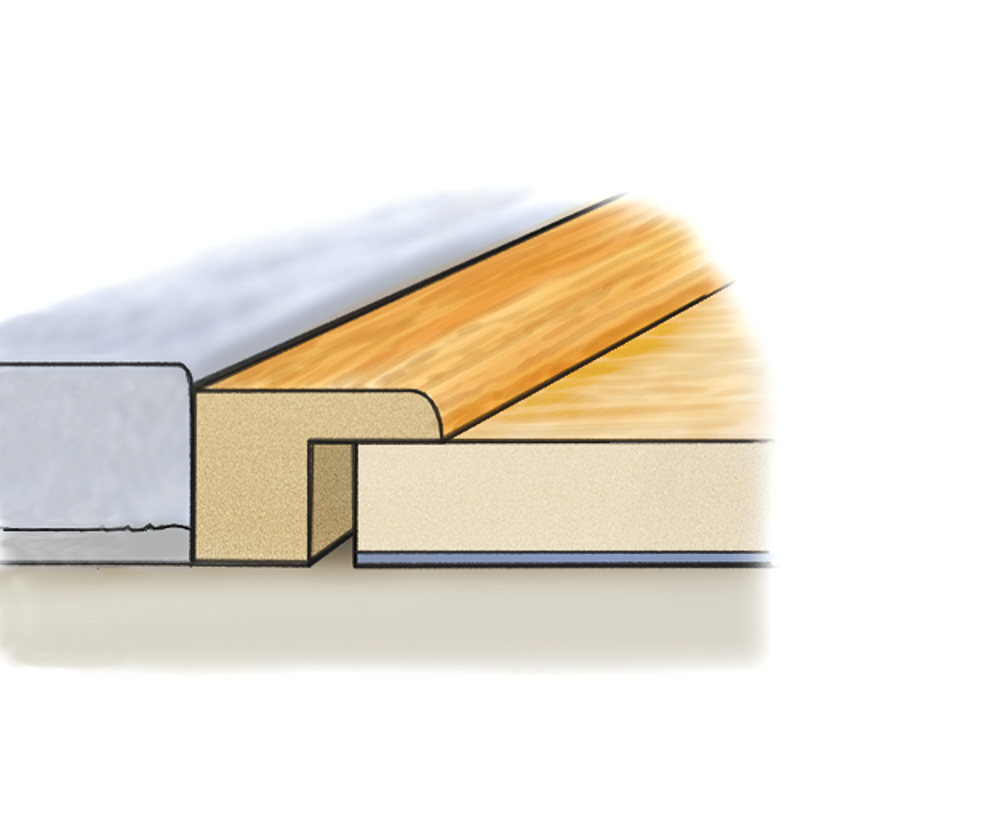
Be wary of warranties (by Steve Simonson)
A 15-year warranty covering wear, fade, stain, and moisture sounds good, right? That’s reassuring, but only until you read the fine print. Truth is, it would be tough to get a laminate to stain or fade. And when it comes to wear-through, the warranty covers the product only if the photo layer is completely worn through in a sufficiently sized area. Small scratches, gouges, or chips typically are not covered. If the product carries a moisture warranty, it typically does not protect against edge-swelling, or water damage caused by moisture emissions from concrete.
You can, however, get peace of mind by trusting whom you buy from. Ultimately, the source for your product may be as important as the manufacturer who put the warranty on the box.
-Steve Simonson is CEO of iFloor.com
Photos courtesy of Krysta S. Doerfler and Quick-Step. Drawings courtesy of Chuck Lockhart
RELATED STORIES
From Fine Homebuilding #182
For more photos, illustrations, and details, click the View PDF button below:
Fine Homebuilding Recommended Products
Fine Homebuilding receives a commission for items purchased through links on this site, including Amazon Associates and other affiliate advertising programs.

Graphic Guide to Frame Construction

All New Bathroom Ideas that Work

Code Check 10th Edition: An Illustrated Guide to Building a Safe House













